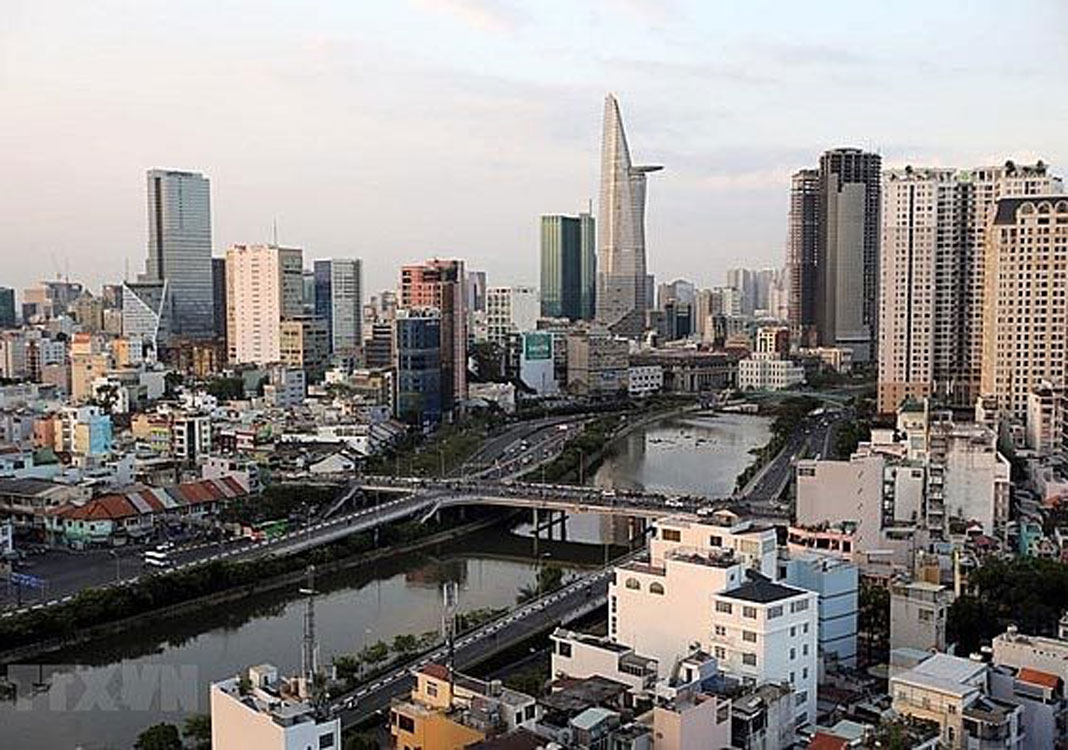HCMC – HCMC will strive to become an economic and financial hub in Asia by 2045 with gross regional domestic product (GRDP) per capita reaching some US$37,000, municipal chairman Nguyen Thanh Phong said at the 13th National Party Congress on January 26.
He cited the municipal Party Committee’s resolution as saying that the city aims to become a smart city by 2025. At the same time, it expects to become a modern industrial service city and remain the country’s economic hub and leader in innovation and quality of life as well as a driving force of the southern key economic zone and the country as a whole. Its GRDP per capita is expected to reach US$8,500.
By 2030, the figure is predicted to increase to US$13,000. It targets emerging as a pioneer in the digital economy and an economic, financial, scientific and technological center in Southeast Asia.
By 2045, the city seeks to become an attractive destination with sustainable development and a high quality of living.
To reach these targets, the city has set 26 targets for the 2020-2025 period, such as an annual GRDP growth of 8% and the proportion of digital economy in the city’s GRDP to 25% by 2025 and 40% by 2030.
HCMC will continue revamping economic growth models to promote fast and sustainable economic growth by studying and applying science and technology, fostering innovation and increasing labor productivity.
The city will also accelerate the development of its key sectors with high added values, such as finance-banking, trade and tourism. It will also build a shared database to save service operation costs and boost the city’s competitiveness.
In addition, a plan to develop HCMC into a financial center in the region and the world will be drafted. The city will encourage the production and export of hi-tech goods, software and digital products, which have high added values and need a small volume of laborers and natural resources.
It will take advantage of benefits from free trade agreements that Vietnam has signed to boost export activities.
Moreover, the city will improve policies to foster key products and brands and support enterprises in the city so they can become competitive in the regional and global markets.
The city is also trying to become the largest innovative startup center in Vietnam, taking the lead in getting the best out of opportunities ushered in by the fourth industrial revolution and developing strongly the digital, shared and circular economy.
Further, supporting industries and four key industries will be developed, while gradually increasing the automation, smart production process and use of renewable energy.
The city will build new industrial parks which have high quality and competitiveness and are suitable for enterprises applying hi-tech.
As for the agriculture sector, the city will enhance the application of hi-tech in clean agricultural production and build new criteria for rural areas to match the city’s urbanization.
Additionally, the city will enhance the urban development by rebuilding old apartment buildings, developing social housing projects, attracting investment in new urban areas, improving the efficiency of anti-flooding projects and climate change adaption, and reducing traffic jams and accidents.
The city has built three breakthrough programs in governance, infrastructure development and manpower and culture.
Besides the three breakthrough programs, the city has worked out a major program to develop enterprises, the innovative startup movement and the city’s key products.
By Van Phong & Minh Duc









